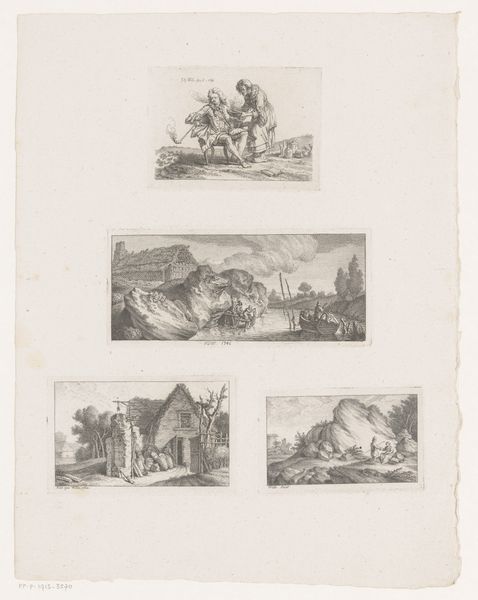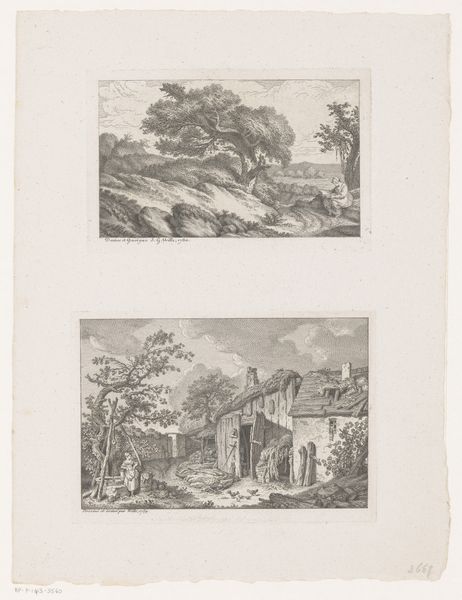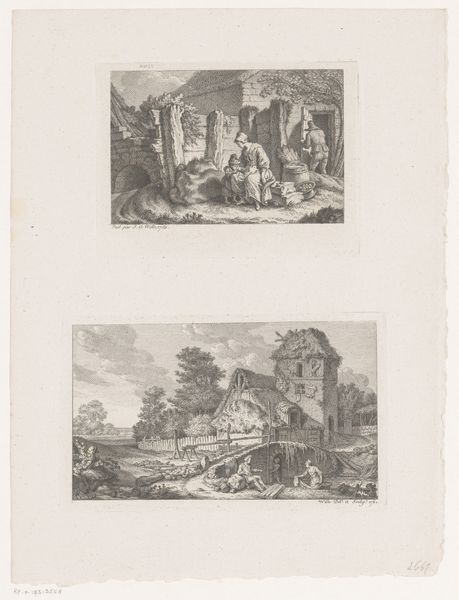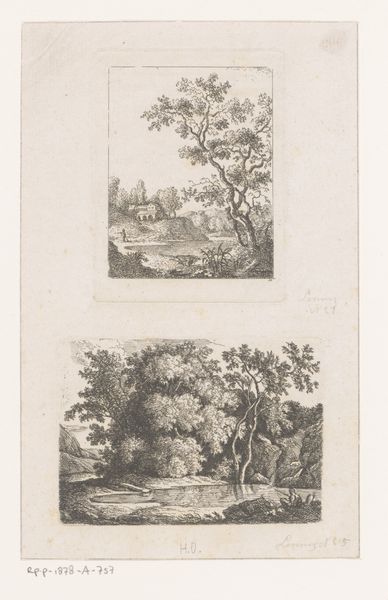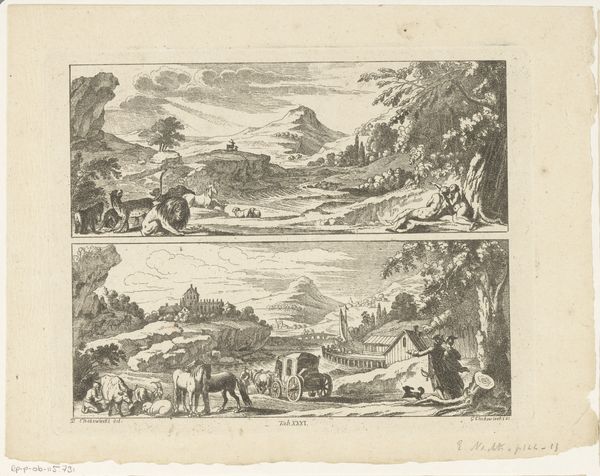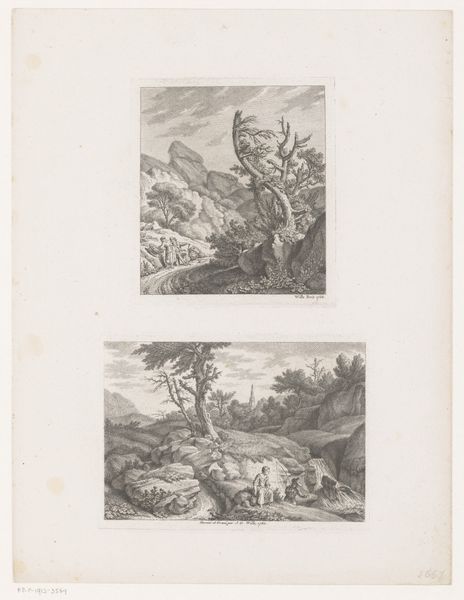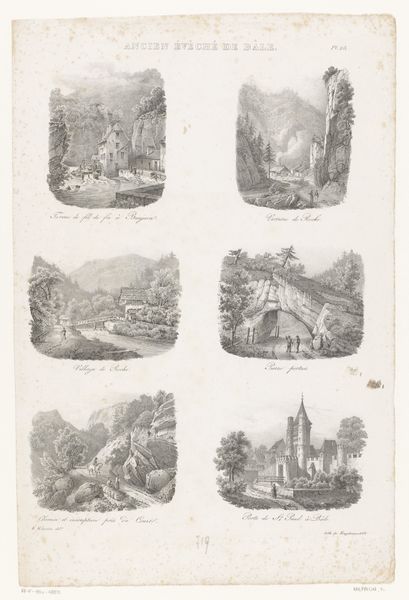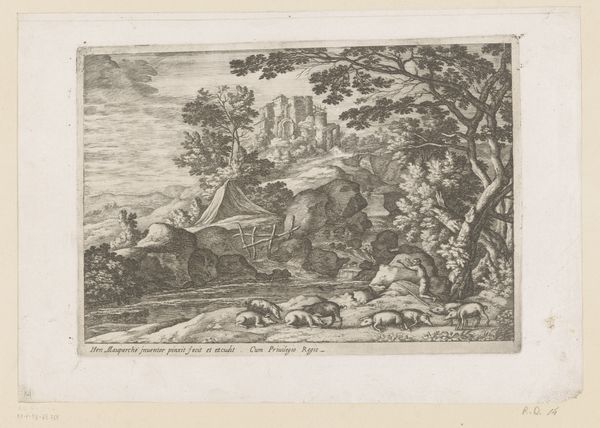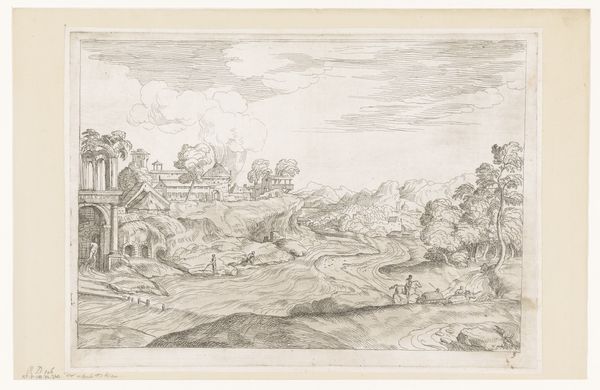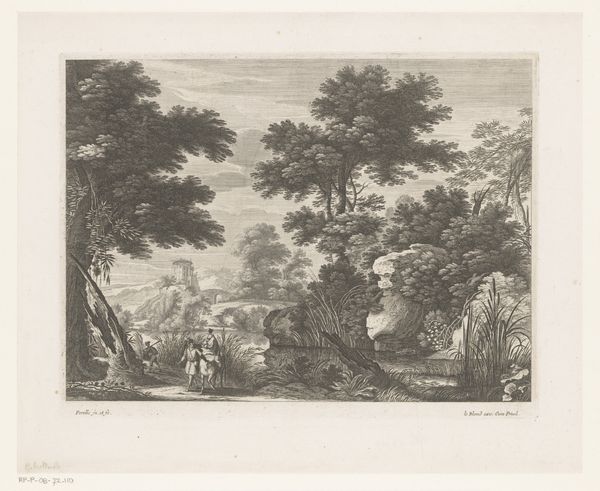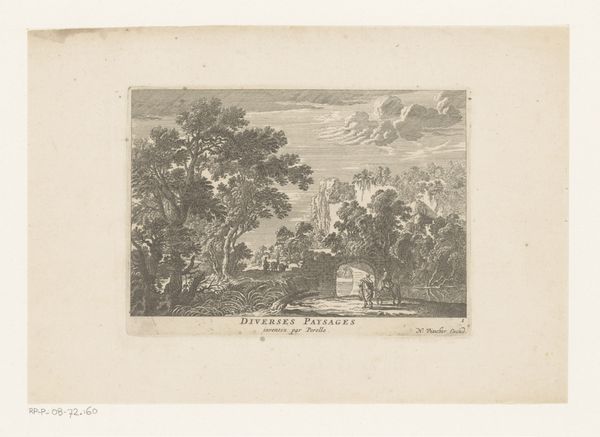
Vrouw die vaatwerk poetst en drie figuren bij hooibergen 1738 - 1754
0:00
0:00
johanngeorgwille
Rijksmuseum
print, etching
#
baroque
# print
#
etching
#
landscape
#
figuration
#
genre-painting
#
northern-renaissance
Dimensions: height 98 mm, width 136 mm, height 103 mm, width 162 mm
Copyright: Rijks Museum: Open Domain
Curator: Ah, here's "Vrouw die vaatwerk poetst en drie figuren bij hooibergen," an etching by Johann Georg Wille, dating from around 1738 to 1754. Editor: Well, isn't that a mouthful! Visually, it feels… gentle. Soft grays, everyday life. Peaceful, but maybe a tad… uneventful? Like a scene observed from afar. Curator: Interesting. Consider the period; prints like these democratized art. This wasn't about grand narratives for palaces, but glimpses into the lives of ordinary folk— available to a broader public. Look at how Wille positions labor—domestic and agricultural—within these landscapes. It speaks to the rising merchant class eager to see idealized versions of rural life. Editor: Ah, the rose-tinted glasses of the rising middle class. So, less "documentary," more "aspirational postcard"? Still, there’s a captivating tranquility. The way he captures the texture of the thatch roofs and those fluffy clouds… it's masterful! Did the technique, the etching, influence the feeling, do you think? Curator: Undoubtedly. Etching allows for incredibly fine lines, ideal for rendering such details. But, it's also about control—the artist carefully layering tones to build depth and atmosphere. These aren't just pretty pictures; they're carefully constructed representations contributing to ideas about Dutch identity and industriousness. Editor: I still see poetry, though. Beyond the societal context, those sweeping fields, the woman quietly working...it's an echo of a simpler existence. Almost utopian. And I'll bet that was appealing to people back then, escaping the grime of city living. Curator: Perhaps. But utopias are always someone’s idealized vision imposed on reality. Consider who these images exclude. Where are the struggles of the landless peasants, the hardships of daily labor? Editor: True. I guess it depends where you are standing, and where, historically, *they* wanted you to stand when you looked at it! All things considered, it's thought-provoking how something so seemingly quiet can speak volumes about social history. Curator: Precisely! It’s in the quiet details where the real story often resides. Editor: I will not look at another idyllic countryside print again without thinking of this conversation!
Comments
No comments
Be the first to comment and join the conversation on the ultimate creative platform.
